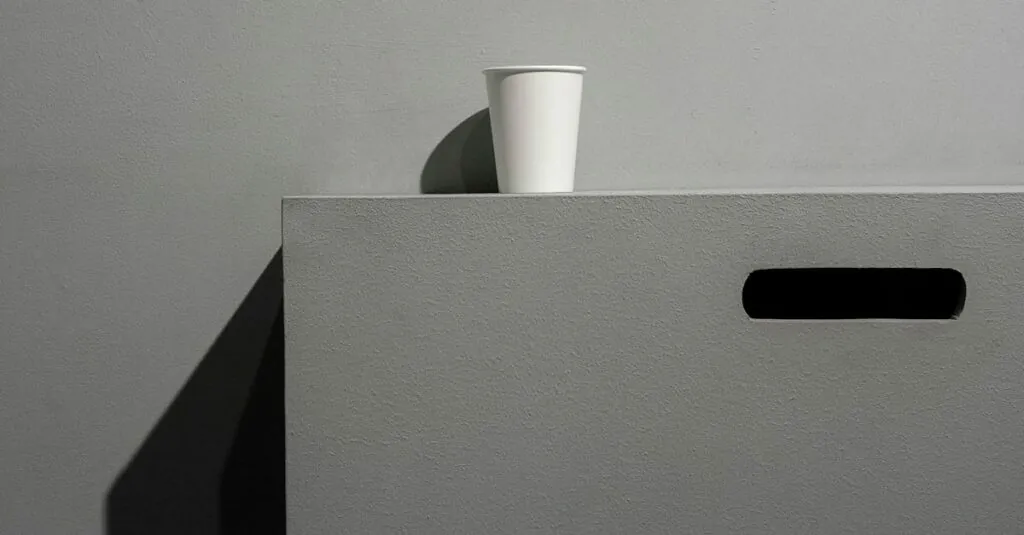Table of Contents
ToggleIn a world buzzing with chaos and clutter, finding your zen can feel like searching for a needle in a haystack. Enter zen interior design—a serene sanctuary that transforms any space into a peaceful retreat. Imagine stepping into a room that whispers tranquility, where every element works in harmony to calm the mind and soothe the soul.
Zen interior design isn’t just about aesthetics; it’s a lifestyle choice that encourages mindfulness and simplicity. With clean lines, natural materials, and a palette inspired by nature, it invites you to breathe deeply and let go of stress. So why not swap that chaotic decor for a space that feels like a warm hug? Dive into the world of zen design and discover how to create your personal oasis—because who wouldn’t want to live like a modern-day monk, minus the robes?
What Is Zen Interior Design?
Zen interior design embodies a philosophy focused on tranquility and simplicity. It prioritizes clean lines and uncluttered spaces to promote a peaceful atmosphere. Natural materials, such as wood, stone, and bamboo, play a significant role, grounding the design in the organic world. Color palettes often include soothing shades inspired by nature, such as soft greens and muted browns.
Mindfulness serves as a core principle of zen design. Each element within the space contributes to a sense of calm, encouraging intentionality in both decor choices and daily living. Minimalism influences the aesthetic, emphasizing the importance of “less is more.” Furniture typically features sleek designs, allowing open spaces to foster relaxation.
Lighting impacts the ambiance significantly. Natural light is favored, creating bright, inviting areas that connect occupants to the outdoors. Artificial lighting should be soft and warm, allowing for a cozy environment while maintaining tranquility.
Zen interior design also integrates nature through indoor plants or water features. These elements not only beautify the space but also aid in stress reduction and air quality improvement. Incorporating textures, such as soft rugs or smooth stones, enhances the sensory experience and promotes a soothing atmosphere.
Individuals seeking a zen-inspired environment often aim to create a sanctuary that reflects their personal journey towards peace and mindfulness. The concept encourages reflection on belongings, ensuring that every item in the space serves a purpose or brings joy. Through this practice, zen interior design transforms homes into serene havens amidst daily chaos.
Key Principles of Zen Interior Design
Zen interior design emphasizes tranquility through a few guiding principles that foster a serene atmosphere.
Simplicity and Minimalism
Simplicity forms the backbone of zen design. Clutter-free spaces promote a sense of calm, encouraging mindfulness in daily life. Fewer decorative items allow each piece to shine with intention. Selecting furniture and decor with clean lines reinforces this minimalist approach, fostering open areas that invite relaxation. An uncluttered environment helps to reduce stress, making it essential for any zen-inspired space.
Natural Elements
Integrating natural elements brings the outside in, enhancing the peaceful vibe of zen interiors. Materials like wood, stone, and bamboo create organic connections to the environment. Using soft, earthy tones in color palettes mimics calming landscapes, promoting relaxation. Incorporating plants serves a dual purpose; they purify air and add a touch of vitality. Water features, whether small fountains or bowls, further elevate the tranquil ambiance, inviting serenity into the home.
Balance and Harmony
Achieving balance and harmony is crucial in zen interior design. Each element needs to complement the others, creating a cohesive look. Symmetry in furniture placement fosters a sense of order, encouraging calmness. Light and dark contrasts should be balanced, adding depth without overwhelming the senses. Mindful arrangement of space encourages harmony, allowing individuals to unwind in their surroundings.
Benefits of Zen Interior Design
Zen interior design offers numerous advantages that create a more peaceful living environment. These benefits include stress reduction and increased well-being, contributing to a more harmonious life.
Stress Reduction
Clutter-free spaces significantly decrease feelings of anxiety. Natural materials like wood and stone create a calming atmosphere, promoting a sense of serenity. Mindfully designed areas encourage relaxation, making it easier to unwind after a long day. Incorporating elements like soft lighting and indoor plants enhances tranquility. Therefore, establishing a zen space effectively helps individuals cope with everyday stressors.
Increased Well-Being
Zen design fosters a heightened sense of well-being through intentional decor choices. Bringing nature indoors, such as using plants, purifies the air and invigorates the senses. Color palettes featuring muted tones evoke a soothing ambiance, promoting emotional balance. A minimalist approach eliminates distractions, allowing for greater focus and mindfulness. Consequently, individuals experience improved mental clarity and emotional stability in zen-inspired environments.
How to Incorporate Zen Interior Design in Your Space
Creating a zen interior design involves thoughtful choices that foster tranquility. Incorporating clean lines and natural materials enhances serenity.
Color Palette Selection
Choose soft greens and muted browns for a soothing color palette. Earthy tones resonate well with nature, promoting a calming atmosphere. Incorporate whites and light grays to maximize the sense of space. Balance warm hues with cooler shades to create harmony. Each color should contribute to a cohesive design that reduces visual stress. Minimal contrast allows for a seamless transition between elements. Avoid vibrant colors, as they can lead to feelings of chaos. Instead, favor pastels or subtle shades that evoke peace.
Furniture and Decor Choices
Select furniture with sleek designs that highlight simplicity. Natural materials such as wood and stone bring warmth and connection to nature. Focus on functional pieces that serve a purpose to avoid clutter. Arrange furniture to create open spaces, allowing for easy movement and flow. Incorporate subtle decor like soft textiles or ceramics to add texture without overwhelming the senses. Mindfulness in decor choices encourages intentionality within the space. Position plants strategically to enhance air quality and introduce life into the environment. Aim for symmetry in arrangements, fostering a sense of balance throughout the room.
Embracing zen interior design can transform any space into a peaceful retreat. By focusing on simplicity and mindfulness individuals can create environments that promote relaxation and reduce stress. The integration of natural materials soothing color palettes and intentional decor choices fosters a sense of harmony and balance.
As personal sanctuaries evolve into havens of tranquility they not only enhance well-being but also reflect a deeper connection to one’s surroundings. Ultimately zen design encourages a lifestyle that prioritizes clarity and calmness allowing individuals to navigate the chaos of modern life with ease.







